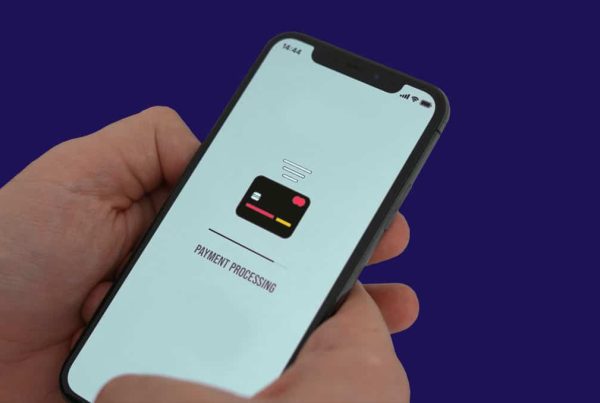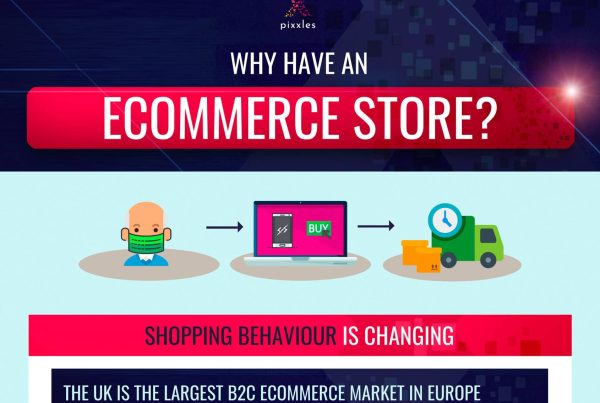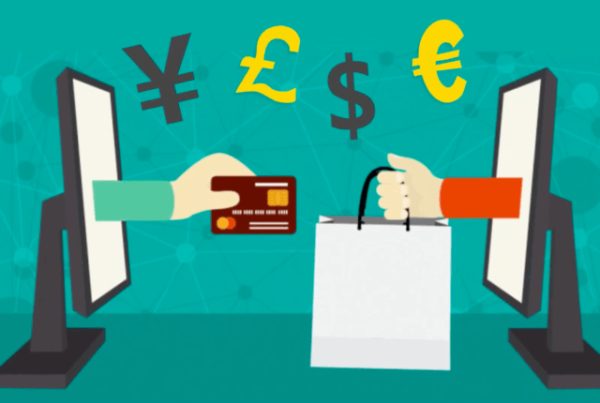Did you know the chargeback process, which was created to protect customers from fraud, is now being used to commit fraud against ecommerce merchants?
According to Expert Market, 86% of chargebacks today are likely the result of friendly fraud. Perhaps even scarier, friendly fraud is rising, so much so that the cost of chargebacks in 2023 is projected to exceed 100 billion USD.
Needless to say, merchants are facing a tremendous challenge, which can be summarized by one very important question:
How do I protect my business while still honoring my customers?
While no strategy can answer this question completely, here are some things you can do to make chargebacks less likely while still treating your customers fairly.
» MORE: Payment Reconciliation Guide
7 Chargeback Prevention Strategies for Ecommerce Merchants
1. Offer Excellent Customer Service
Chargebacks are costly for your business, but they only occur when customers dispute transactions with their card issuers directly, leaving you, the merchant, out of the loop.
This means that potential chargebacks can often be addressed and stopped before they occur. The key is customer service. The better your customer service, the more likely your customers will trust and communicate with you in the event something goes wrong.
Now:
In a perfect world, your customers should always come to you to resolve problems with their purchases. But a lot of customers simply won’t communicate with you, opting to go directly to their card issuers instead.
With this in mind, we suggest putting your contact information on multiple places on your website, and if you can do so, add a live chat feature to your site as well.
We also suggest adding a small CTA in the order confirmation you send to customers, which should say something like, “If you have any issues, please contact us ASAP. We’re here to help!”
» MORE: Why Pixxles? A payment company with high standards for ethics and transparency
2. Have an Easy-to-Understand Policy for Cancellations and Returns
Chargebacks can occur when customers don’t know how to cancel or return their orders.
To avoid this problem, you’ll want to create an easy-to-understand policy for cancellations and returns and clearly display it on your website, especially the footer and the point of purchase.
Here are some qualities of a good cancellation and return policy:
- Uses straightforward language
- Free from jargon or complex terms
- Addresses common questions about your cancellation and return policy
- Offers step-by-step instructions on how to initiate a cancellation or return
- Updated regularly based on customer feedback
Remember, a well-informed customer is less likely to resort to chargebacks.
3. Use Fraud Prevention and Detection Tools
To combat chargebacks, you can use device fingerprinting technology to monitor and flag suspicious devices that make purchases on your website.
You can tailor the activity notifications you receive based on purchase frequency, volume, location, and other metrics.
Some signs of fraudulent purchases include:
- Multiple purchases in a short time
- Purchases of high-value items in unusual quantities
- Multiple purchases using different credit cards from a single IP address
- Inconsistent billing and shipping addresses
- Orders from locations with high fraud prevalence
- Frequent order changes, especially address modifications
- Orders from new accounts with express shipping requests
- Unusual buying patterns when compared to typical customer behavior
AVS (Address Verification System)
Since we’re talking about fraud prevention tools, we would be remiss not to mention AVS here, which is a fraud prevention system designed to verify the address of a person claiming to own a credit card.
Utilizing AVS helps reduce fraudulent transactions, as it flags discrepancies between the buyer’s provided billing address and the address registered with their credit card company.
When a discrepancy arises, it indicates a higher risk of fraud. For example, if a fraudster has stolen credit card details but doesn’t know the legitimate billing address, the transaction can be flagged or declined based on the AVS mismatch.
CVV (Card Verification Value)
Another fraud prevention tool is CVV/CVC, which is a security feature on credit and debit cards that almost everybody has seen. It’s the three (or four) digit number that is separate from the main card number, usually found on the back of the card.
We suggest making the CVV/CVC field mandatory during the checkout process, as it requires the buyer to have a physical card in their possession. However, please bear in mind that storing CVV/CVC data is against payment card industry standards.
3DS2 (3D Secure 2.0)
Another tool that merchants can use to combat fraud is 3DS2, which requires a customer to authenticate themselves with their bank at the time of purchase.
With 3DS2, even if a fraudster has someone else’s card details, they will still need additional authentication details to complete a purchase. This shifts the liability from you (the merchant) to the issuing bank and helps protect you against chargebacks.
» MORE: Pixxles security compliance
4. Have a Contract
We recommend protecting your business by having your customers sign a clear and detailed contract before making a purchase. This agreement should precisely detail your terms of service.
Here’s how a solid contractual agreement can help reduce chargebacks.
It Sets Expectations
A contract sets the terms and expectations for you and the customer. So, you’ll want to detail the specific goods or services to be provided, the delivery timeframe, the costs involved, and other particulars, which will remove all ambiguity.
When both parties understand what to expect, it makes disputes less likely.
Proof of Agreement
A signed contract serves as evidence that your customer agreed to your terms of service and, in the event of a chargeback dispute, can help you validate your case to the card issuer.
Conditions for Returns and Refunds
Within your contract, you can clearly detail your return and refund policies.
Details should include the condition of returned items, restocking fees, acceptable return timeframe, and more.
Dispute Resolution Mechanisms
A well-drafted contract will outline mechanisms for settling disputes, such as mediation or arbitration. It’s a smart idea to direct disagreements through these channels rather than incentivize your customers to resort to chargebacks.
Digital Acknowledgement
When your customers digitally sign a contract, it can include timestamped data and even IP addresses, offering an additional layer of proof in case of disputes.
Deterrent to Friendly Fraud
“Friendly fraud,” where a customer knowingly files an unjustified chargeback, can often be deterred by a purchase contract.
If a customer does need to return an item, then we suggest you require the following:
- Screenshot of the product
- Proof of purchase
- Proof of delivery (photo of undamaged item)
» MORE: Payment Fraud Prevention 101: What Businesses Need to Know
5. Use a Recognizable Merchant Descriptor
Many times, customers initiate chargebacks simply because they don’t recognize the merchant’s name on their billing statements.
While this response is well-intentioned, it can still hurt your business.
Use the Same Billing Name
To mitigate this problem, we highly suggest that you use your business name as your merchant descriptor. The last thing you want to do is use a billing name that differs from your business or brand name.
Some merchants do this because they use a parent company name or even the name of a third-party payment processor. But we wouldn’t suggest anything like this. These types of oversights can lead to unnecessary chargebacks and lost revenue.
The Importance of Clear Billing Descriptors
Billing descriptors should provide clarity and unmistakably identify your business, making it easy for your customers to recall their purchases.
An excellent billing descriptor will also offer a contact number and a short reference to the product or service that was sold.
Regular Audits and Feedback
It’s a good idea to periodically review your billing descriptors, especially if there have been any brand changes or if you switch payment processors.
6. Maintain Complete Records of Online Orders
When it comes to online shopping, keeping detailed records is a must, especially if you want to address chargebacks effectively.
During a chargeback dispute, you’ll need to have the following information on hand:
- Customer details
- IP addresses
- Transaction amounts
- Communication logs with timestamps
- Order confirmation receipts
- Shipping and delivery confirmations
- Proof of product or service delivered
- Screenshots of product description and price at the time of purchase
- Any promotional or discount details related to the transaction
- Notes or logs of any customer service interactions
- Signed agreements or terms of service (if applicable)
Defending Against Chargebacks
You’ll need all these details when confronted with a chargeback since they show you did everything above board.
7. Send Purchase and Subscription Reminders
While easy and convenient online shopping certainly has its advantages, it also means that your customers can easily forget about their purchases.
This is particularly true for subscription-based services, which come with recurring charges that can fade into the background of your customer’s monthly credit card statements.
Reminders as a Proactive Solution
Fortunately, a simple reminder can reacquaint your customers with a past purchase or highlight an upcoming subscription renewal. This helps reduce the chances of a startled “I don’t remember this purchase” reaction.
Regular communication like this also reminds customers that they’re dealing with a proactive and transparent business.
And, perhaps best of all, it gives you an opportunity to engage with customers and offer them updates and promotions or simply a summary of the value you offer them.
Crafting Effective Reminders
For reminders to be effective, they should be:
- Timely (Send them out just before a subscription renewal or shortly after a purchase.)
- Clear and concise (State the purpose of the reminder and the details of the purchase.)
- Interactive (Give your customers a way to engage, whether that’s accessing their account, exploring related products, or contacting customer service.)
Why Do Chargebacks Occur?
Chargebacks happen for three main reasons: Merchant errors, criminal fraud, and friendly fraud.
1. Merchant Errors
Merchant errors are mistakes or oversights made by the merchant during the selling, fulfillment, or post-purchase process.
Examples of merchant errors include:
- Shipping the wrong product to a customer
- Billing a customer more than once for the same transaction
- Failing to process a return or refund accurately or in a timely manner
- Not providing clear or accurate descriptions of products, leading to unmet customer expectations
Businesses can mitigate merchant errors by implementing quality control checks and investing in reliable order processing and billing systems.
2. Criminal Fraud
Criminal fraud occurs when a thief gains access to someone else’s payment information and makes unauthorized purchases.
Examples of criminal fraud include:
- Stolen credit card data being used to make online purchases
- Phishing attacks that trick individuals into revealing their payment information
To stop criminal fraud, merchants can implement security measures like two-factor authentication, Address Verification System (AVS) checks, and Card Verification Value (CVV) checks.
3. Friendly Fraud
Friendly fraud is a deceptive practice in which a customer, after making a legitimate purchase, wrongfully reports the transaction as unauthorized or claims non-receipt of goods.
Examples of friendly fraud include:
- A customer receives the purchased item but claims they didn’t, seeking a refund while retaining the product
- A customer regrets a purchase and, instead of seeking a standard return, opts for a chargeback as an easier route
Distinguishing between genuine chargebacks and friendly fraud can be difficult.
» MORE: Why PCI DSS is more important than ever for ecommerce merchants
Using Chargeback Reason Codes
Every chargeback comes with a reason code, which is a standard identifier that offers insights into the specific reasons a chargeback occurs.
Tactical Insights
Once you know why chargebacks are occurring, you can implement targeted strategies to solve the issue. For instance, if a predominant reason is “product not as described,” you may want to revamp your product listings or improve quality control.
Continual Monitoring
We suggest making it a routine practice to review chargeback reason codes, ideally on a monthly basis. This will help you stay ahead of any emerging patterns or issues, adjusting your business as needed.
Start a conversation with Pixxles
Pixxles is an FCA-authorised payment provider that puts our customers first. We are directly accountable to our customers and to the Regulator.
Visit our Contact page to speak with us and learn more.








